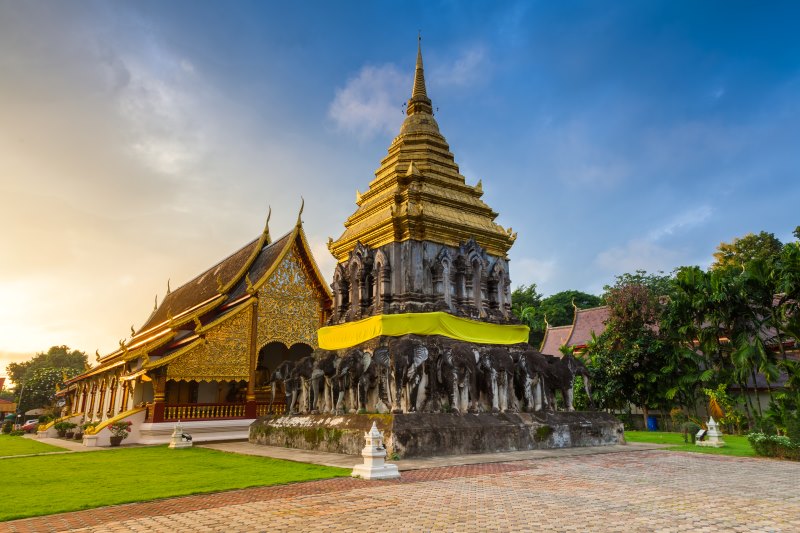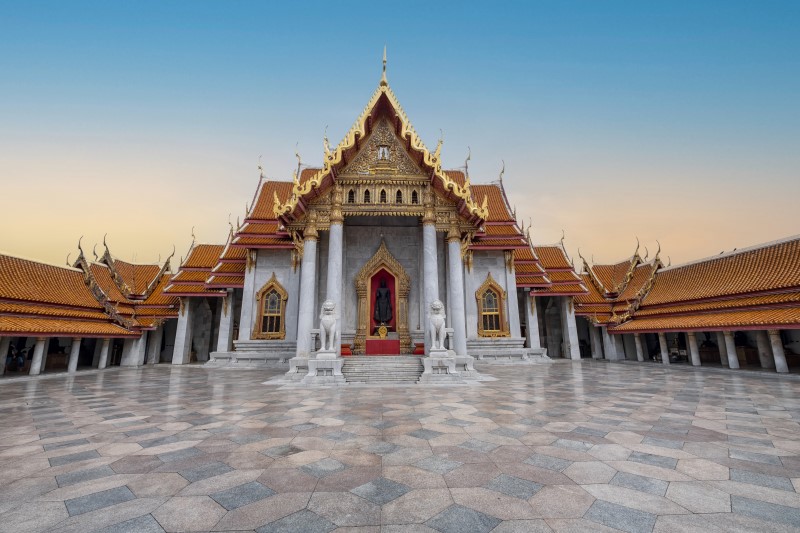
Thailand, a vibrant and culturally rich country in Southeast Asia, is home to a plethora of architectural treasures that showcase its ancient history and deep-rooted traditions. From magnificent temples to grand palaces and historical sites, exploring Thailand’s architectural wonders is a journey back in time.
Join us as we embark on a virtual tour to discover the captivating beauty and historical significance of Thailand’s temples, palaces, and historical sites.
Thailand’s temples, also known as “wats,” are renowned for their intricate designs, vibrant colors, and spiritual ambiance. One of the most iconic temples in Thailand is Wat Arun, located on the banks of the Chao Phraya River in Bangkok. Known as the Temple of Dawn, Wat Arun features a towering spire adorned with ceramic tiles and seashells, reflecting the shimmering sunlight and creating a mesmerizing sight.
Another remarkable temple is Wat Phra Kaew, situated within the grounds of the Grand Palace in Bangkok. This temple houses the Emerald Buddha, Thailand’s most sacred and revered statue. The architectural details of Wat Phra Kaew are awe-inspiring, with gilded pillars, ornate carvings, and intricate mural paintings that depict scenes from Buddhist mythology.
Thailand’s palaces showcase the opulence and grandeur of the country’s historical past. The Grand Palace in Bangkok stands as a testament to the country’s rich architectural heritage. This vast complex features a mix of Thai and European architectural styles, with stunning buildings, halls, and pavilions adorned with intricate details and gold leaf decorations. The highlight of the Grand Palace is the majestic Wat Phra Kaew, mentioned earlier.
In the ancient city of Ayutthaya, the Bang Pa-In Royal Palace awaits exploration. Built during the Ayutthaya Kingdom, this palace showcases a fusion of Thai, Chinese, and European architectural influences. The beautifully landscaped gardens, ornate pavilions, and stunning lakes make it a picturesque destination for visitors.
We have already written an article on this topic. Click here to see a comprehensive list of Thailand’s must-visit locations
Thailand’s historical sites are like time capsules, preserving the remnants of ancient civilizations and offering insights into the country’s past. Sukhothai Historical Park, a UNESCO World Heritage site, is a prime example of Thailand’s ancient glory. Dating back to the 13th century, this vast archaeological site boasts numerous temples, Buddha statues, and intricately carved stone pillars. Exploring Sukhothai is like stepping into the past and witnessing the grandeur of the Sukhothai Kingdom.
Another noteworthy historical site is the ancient city of Ayutthaya. Once a bustling capital, Ayutthaya was destroyed by the Burmese in the 18th century. However, the remnants of its former glory still stand, with impressive ruins, stone sculptures, and towering prangs (Khmer-style towers) dotting the landscape. Ayutthaya Historical Park offers a captivating glimpse into Thailand’s past and is a must-visit for history enthusiasts.
Thai architecture is deeply rooted in the country’s cultural and religious traditions. The distinct features of Thai architecture can be traced back to its influences from neighboring countries like Cambodia, Laos, and Myanmar, as well as its own unique artistic styles.
The use of intricate carvings, colorful murals, and gilded ornaments is a defining characteristic of Thai architecture. These embellishments often depict religious stories and mythical creatures, reflecting the importance of Buddhism in Thai society. The curved, multi-tiered roofs with pointed finialsand intricate details add a touch of elegance to Thai structures.
Moreover, Thai architecture prioritizes harmony with nature. Many temples and palaces are built in serene natural settings, incorporating elements such as gardens, ponds, and trees into their design. This integration of nature creates a tranquil atmosphere and enhances the overall aesthetic appeal of the architectural wonders.
Recognizing the significance of Thailand’s architectural heritage, preservation efforts have been instrumental in conserving these treasures for future generations. Various organizations, including the Fine Arts Department of Thailand and UNESCO, have been actively involved in restoration and conservation projects.
Efforts have been made to restore deteriorating structures, protect delicate artwork, and implement measures to prevent further degradation. Additionally, educational initiatives have been introduced to raise awareness about the importance of preserving these architectural gems and promoting responsible tourism.
Visitors to Thailand’s temples, palaces, and historical sites play a crucial role in preserving and respecting these architectural wonders. Here are a few guidelines to follow:
a. Dress modestly: As many of these sites are religious or cultural landmarks, it’s important to dress respectfully, covering your shoulders and knees. This shows respect for local customs and traditions.
b. Follow the rules: Pay attention to signs and guidelines provided at each site. Some areas may be off-limits or require specific protocols to be followed. Be mindful of these instructions to ensure the preservation of these architectural treasures.
c. Avoid touching or damaging structures: Many of these sites have delicate artwork and structures. Refrain from touching or leaning on them to prevent damage. Additionally, avoid using flash photography, as it can cause long-term harm to paintings and artifacts.
d. Support local initiatives: Contribute to the preservation efforts by supporting local initiatives, such as donating to restoration projects or visiting museums and cultural centers that promote awareness and education about Thailand’s architectural heritage.
Thailand’s temples, palaces, and historical sites are architectural treasures that provide a glimpse into the country’s rich history and cultural heritage. From the intricate designs of the temples to the grandeur of the palaces and the remnants of ancient civilizations, each site has its own unique story to tell. By appreciating, respecting, and supporting the preservation of these architectural wonders, we can ensure that future generations can also experience their beauty and significance. Embark on a journey to explore Thailand’s ancient wonders, and let the architectural splendor captivate your senses.




Questions or interested in advertising? Mail info@love2blog.com